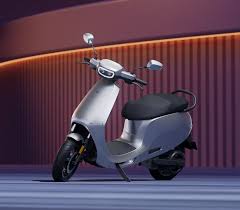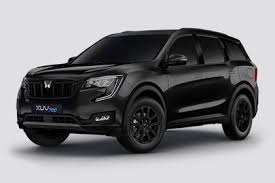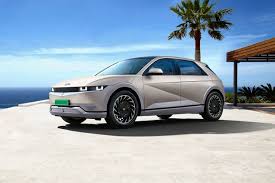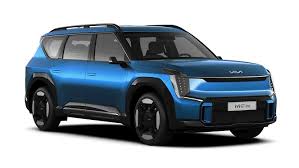Introduction: The Lithium Shockwave
An unexpected source is shaking the international EV market — China. As Beijing increases control of lithium refining and exportation, the world’s reliance on the metal used to fuel electric vehicles comes under increasing scrutiny. Lithium is sometimes referred to as the “white gold” of the clean-energy age, and China processes over two-thirds of the world’s supply. Any disruption to this chain doesn’t merely rattle markets — it reconfigures the global EV equation, impacting everyone from Tesla in California to Ola Electric in Bengaluru.
China’s domination of lithium refining and export controls:
- More than 70% of global lithium refining capacity is located in China, which has huge sway over EV battery prices and production timelines.
- Export licensing rules imposed recently and tighter quotas on the export of lithium carbonate have caused automakers across the globe to panic.
- Experts say even a slight policy change in Beijing can drive lithium prices up overnight, squeezing the EV manufacturers’ margins around the world.
How this step is redefining global EV dynamics:
- Western car makers are hurrying to diversify their supply chains — investing in mines in Australia, Chile, and Africa.
- Battery technology companies are speeding up exploration of sodium-ion and solid-state alternatives.
- Meanwhile, markets are seeing renewed turmoil, with lithium futures flipping sharply as governments rush to procure stable supplies.
- The crisis is making countries redefine “energy independence” when it comes to key minerals, rather than oil.
Why Indian EV startups such as Ola Electric and Ather Energy find themselves at a pivot point:
- India’s aggressive EV push is dependent to a large extent on imported lithium-ion cells, a majority of which have Chinese origins.
- Two of India’s top EV startups, Ola and Ather, are in a strategic dilemma.
- They need to either ramp up local battery production or risk margin squeezes and even supply shocks.
- For policymakers and investors, this is a turning point: whether India will make the lithium shock an innovation opportunity, or collateral damage in a global game of resource tug-of-war.
China’s Lithium Monopoly: The Silent Power Play
China’s dominance in the lithium ecosystem is not accidental — it’s the result of a two-decade-long industrial strategy. While countries like Australia and Chile mine most of the world’s lithium ore, it is China that processes nearly 70% of it, refining the raw material into battery-grade chemicals essential for electric vehicles. This dominance stretches along the whole battery value chain — from anode components and cathode materials to completed lithium-ion cells. The outcome: China is not only a significant supplier; it’s the gatekeeper of the world EV revolution that nobody can live without.
 Effect on battery prices, global EV manufacturers, and supply chain bottlenecks:
Effect on battery prices, global EV manufacturers, and supply chain bottlenecks:
- Lithium is notoriously unstable in price, but China’s near-monopoly makes its price even more volatile.
- When Chinese refineries reduce output or modify quotas, international EV producers experience drastic cost increases — up to 30–40% within weeks, sometimes.
- Tesla, Rivian, and Volkswagen have been pushed to revise contracts, while smaller European and Asian EV start-ups are barely holding on.
- The ripple effects also spill over into shipping and logistics; lithium chemicals are shipped primarily out of Chinese ports, and any slowdown increases the global backlog.
Recent Chinese policy tightening — export curbs, pricing controls, or strategic reserves:
- In 2024 and 2025, Beijing imposed tougher export licensing regulations on major lithium compounds due to “national resource security” reasons.
- It also indicated the intention to establish strategic lithium reserves, much like nations store oil. Local producers were encouraged to favour domestic demand, capping exports to a few allied nations.
- These actions effectively weaponize lithium as a geopolitical tool — enabling China to exercise EV market dynamics, prices, and even foreign energy policy with precision-guided surgical strikes.
Ripple effect on Indian EV manufacturers that are dependent on imported lithium cells:
- India, which is over 90% reliant on imported lithium-ion cells, is extremely vulnerable to this geopolitical stress.
- EV players such as Ola Electric and Ather Energy are dependent on cell imports from Chinese and Korean vendors.
- The tightening norms for exports have already caused longer lead times, higher procurement costs, and larger inventory risks.
- Fourth-margin startups, this volatility puts profitability and production timetables at risk. Indian automakers have now, therefore, been stepping up localization efforts — from the establishment of gigafactories to alternative chemistries such as sodium-ion — to lessen their reliance on Chinese lithium hegemony.
India’s EV Landscape: The Race for Localization
China’s supremacy in the lithium world is not by chance — it’s a result of two decades of industrial planning. While nations such as Australia and Chile produce the majority of the world’s lithium ore, it is China that actually processes almost 70% of it, purifying the raw material into battery-grade chemicals that power electric vehicles. This control sweeps the entire value chain of the battery — from cathode material and anode components to finished lithium-ion cells. The outcome: China is not only a big supplier but the necessary gatekeeper of the global EV revolution.
Effect on battery prices, global EV makers, and supply chain bottlenecks:
Lithium prices are notoriously volatile, yet China’s near-monopoly makes them even more unreliable.
- Whenever Chinese refineries reduce production or modify output quotas, worldwide EV producers experience drastic cost increases — even up to 30–40% in a matter of weeks.
- Tesla, Rivian, and Volkswagen are just some of the major companies that have had to renegotiate supply agreements, with smaller European and Asian EV startups barely being able to cover their costs.
- The ripple effects also reach shipping and logistics; with lithium chemicals mainly departing Chinese ports, any slowdown magnifies the world backlog.
Recent tightening of Chinese policy — export restrictions, price controls, or strategic reserves:
- In 2024 and 2025, Beijing implemented tighter export licensing regulations for critical lithium compounds, under the guise of “national resource security.”
- It also hinted at the establishment of strategic lithium reserves, much like nations stockpile oil.
- Local manufacturers were encouraged to give domestic demand precedence, curbing exports to specific allied countries.
- These actions effectively turn lithium into a tool of geopolitics — enabling China to manipulate EV market dynamics, prices, and even foreign energy policies with precision surgery.
Ripple effect on Indian EV producers that are dependent on imported lithium cells:
- India, which imports over 90% of its lithium-ion cells, is extremely vulnerable to this geopolitical stress.
- EV incumbents such as Ola Electric and Ather Energy are relying on Chinese and Korean cell imports.
- The tightening export regulations have already resulted in longer lead times, escalating procurement costs, and rising inventory risks.
- For startups making marginal profits, the volatility imperils profitability and production timelines.
- As a result, Indian carmakers are now racing ahead with localization initiatives — from establishing gigafactories to looking into new chemistries such as sodium-ion — to decouple themselves from Chinese dominance in lithium.
Ola Electric: Betting Big on Vertical Integration
Ola Electric has emerged as India’s champion in the EV revolution — not merely as a two-wheeler manufacturer, but as a vertically integrated energy and mobility firm. This vision is at its core its big-bang Gigafactory venture in Krishnagiri, Tamil Nadu, which is a pillar of India’s quest to be battery-independent. The factory will be among the biggest EV cell production facilities in Asia, highlighting Ola’s focus on cutting dependence on lithium-ion cells imported from overseas and taking control of its entire value chain — from design and cell chemistry to assembly and vehicle production.
Ola’s Tamil Nadu Gigafactory — projected production capacity and timeline:
- Spreading over 115 acres, Ola’s Gigafactory is designed with a capacity of 5 GWh, which can be scaled up to 100 GWh in the long run.
- The production kick-off is projected for late 2025, and full-scale operations should start around 2026–27.
- Upon becoming operational, it will provide cells not just for Ola’s scooters but also for its future electric motorcycles and automobiles.
- The plant features state-of-the-art automation, AI-based quality assurance, and sustainability features such as waste heat recovery and renewable power generation.
- This plant is a key component of Ola’s plan to build an end-to-end Indian EV ecosystem.
Emphasis on R&D of battery cells and local manufacturing:
- Ola Electric has set up a Battery Innovation Center (BIC) in Bengaluru, the largest of its type in Asia.
- The center specializes in creating lithium-ion and solid-state cell chemistries, customized to Indian road conditions and climate.
- R&D groups at the company are investigating LFP formulations for improved thermal stability and sodium-ion substitutes to minimize lithium dependency.
- By making significant investments in local design and testing infrastructure, Ola hopes to reach 50–60% localization of cell components in the next three years — a step that can significantly reduce production expenses and supply risks.
IPO plans: investor sentiment, valuation, and risks
- Ola Electric is getting ready for India’s most-awaited IPO, which is likely in late 2025 or early 2026.
- The company is looking to raise about $700–800 million, targeting a valuation of $7–8 billion, making it one of India’s leading EV players.
- Investor morale is upbeat, given its brand recognition, fast growth, and government support.
- Yet, experts caution against execution risks, considering the capital-intensive nature of battery production and slim profitability in the EV two-wheeler space.
- The future of the company after the IPO would depend on how well it can scale up volumes with quality and cost controls.
How Ola’s “Make in India” strategy might counteract lithium supply shocks:
- Ola’s vertically integrated business model — from battery R&D to cell manufacturing, vehicle assembly, and charging infrastructure — serves as a strategic bet against lithium uncertainty.
- By embedding the majority of its value chain locally and locking raw material partnerships under India’s Critical Minerals Mission, Ola can mitigate dependence on Chinese supply volatility.
- And its focus on recycling and second-life batteries has the potential to recover critical materials locally, insulating the business even further from global disruptions.
Ather Energy: The Smart Expansion Strategy
Ola Electric pursues scale via a no less strategic path: evolving from a pure EV maker to a full-fledged mobility ecosystem player. Ather’s attention goes well beyond the vehicle to encompass the entire ownership journey — from its high-flying Ather Grid charging network to software-enabled performance optimization and subscription-based connectivity services. This ecosystem strategy not only develops customer loyalty but also generates repeat revenue streams, providing stability in a shock-prone market for raw materials and supply chains.
Ather’s transition from pure manufacturing to ecosystem play:
- Ather has deployed more than 2,000+ fast chargers in 160 cities under its Ather Grid network, providing one of India’s most ubiquitous charging networks for two-wheelers.
- Ather’s proprietary software platform drives real-time diagnostics, OTA updates, and intelligent features such as ride analytics and adaptive modes.
- The Ather Stack 6.0 system allows users to use connected services by subscribing every month, reducing hardware to just a part of an extended digital ecosystem.
- Diversification guarantees sustained engagement and reduces dependence on one-time sales of products.
Dependence on partnership for cell supply vs in-house development plans:
- While Ola does not outsource lithium-ion cells from foreign suppliers in China and South Korea at present, Ather does.
- Ather, however, has indicated that it plans to localize such critical components by assembling battery modules locally and seeking joint ventures for cell development under India’s ACC PLI scheme.
Financial strength after Hero MotoCorp support and possible IPO route:
- With Hero MotoCorp owning 38%, Ather has robust financial support and operational stability.
- The current funding rounds, including GIC and Tiger Global investments, have strengthened its balance sheet to more than $400 million in aggregate funding.
- The firm is said to be considering an IPO in around 2026, at an estimated valuation of $3–4 billion.
- Hero’s distribution network and vendor ecosystem also provide Ather with a strength in scaling up production, which is an important advantage with competition growing in EVs.
How Ather stands up to raw material uncertainty globally:
- Ather’s plan to shield itself from the ups and downs of lithium prices is operational flexibility and diversified procurement.
- The company has established multinational supply agreements to minimize single-source reliance, as well as investigating local production of major components to limit import exposure.
- Its increased emphasis on software, services, and user experience enables it to be profitable even when hardware margins vary.
- Through balancing partnerships and phased localization, Ather emerges as a tech-led, capital-frugal EV player that can thrive even in a volatile global commodity scenario.
Lithium Crunch = Investment Opportunity?
The lithium supply shock is targeting the EV space. In the last two years, lithium carbonate prices have oscillated by more than 200%, inducing corresponding volatility in EV stock valuations globally. Markets have started to reward firms showing mastery over supply chains and punish those significantly dependent on Chinese imports. In this environment, Indian EV start-ups such as Ola Electric and Ather Energy are at a special crossroads — not yet multinational behemoths, but very well-placed to gain from policy tailwinds, localization perks, and a huge domestic market that still has only limited entry from multinational players.
Global impact of lithium price rise on EV stocks:
- The battery price increase since 2022 has immediately affected the stock performance of EV makers.
- Industry giants such as Tesla had their gross margins contract as raw material prices skyrocketed. Still, BYD and CATL were able to buffer the impact through vertical integration — and enjoyed robust investor faith.
- Lithium mining and refining businesses, however, such as Albemarle and Tianqi Lithium, recorded record profits and steeply rising stocks.
- For EV OEMs, investors grew more concerned about battery supply security and rewarded those who are investing in manufacturing in-house or strategic alliances.
Comparative analysis: Ola, Ather vs global peers such as BYD, Tesla, Nio:
- Ola Electric is replicating BYD’s playbook in going for vertical integration from cell to vehicle manufacturing. Its gigafactory strategy follows global patterns where cell manufacturing control propels valuation premiums.
- Ather Energy, on the other hand, is following a model similar to Nio, emphasizing ecosystem services — charging, connectivity, and customer experience — to maintain margins in the face of hardware cost pressures.
- Both are smaller in size than Tesla, but India’s emerging EV market provides them with a structural advantage: a cost-conscious, volume-oriented climate with government support for domestic production.
- As others battle plateauing growth in established markets, Ola and Ather’s growth potential remains in a rapidly expanding consumer base and increasing electrification of city mobility.
Can India’s localization push lure foreign investors amidst China risks?
- Yes — India’s initiatives for localization of batteries and mineral diplomacy (with countries such as Australia, Argentina, and Bolivia) have attracted it as a strategic investment destination.
- As China clamps down on exports, foreign investors are looking for diversified exposure to the EV supply chain, and India has the correct combination of policy stability, market scale, and industrial momentum.
- The EV and battery PLI schemes, together with 100% FDI permission in the sector, are already beginning to draw Japanese, Korean, and European battery companies. Ola’s and Ather’s future IPOs can act as entry points for foreign funds to hedge against China-focused volatility.
Expert/analyst perspective on near-term volatility vs long-term potential:
- Analysts continue to be split in the near term, on account of fears of elevated valuations, execution risks, and raw material inflation.
- But the long-term story is convincingly bullish. With localization intensifying and domestic gigafactories operational by 2026–27, India’s EV industry may undergo a multi-year re-rating as China did a decade ago.
- Analysts from brokerage firms such as Morgan Stanley and Jefferies point out that India’s EV ecosystem has the potential to unleash $100 billion of market capitalization by 2030, if policy support and manufacturing scale hold up.
- For investors, the lithium shortage may be the gateway to India’s electric decade.
The India Advantage: Policy, Scale, and Market Demand
India’s electric vehicle course is playing out very differently from the West. While Europe and America concentrate mainly on four-wheelers in the premium segment, India’s expansion is being driven by mass mobility and affordability. The two-wheeler and three-wheeler segments that represent almost 80% of all EV sales are leading adoption because of their lower price point, city convenience, and fast charging ability. This distinct demand pattern provides India with a decisive advantage — it can ramp up electrification quicker and at lower costs, without having to wait for costly battery chemistries to come of age. Coupled with strong policy backing and novel mineral supply strategies, India is creating an EV roadmap that’s resilient as well as world-class.
Why India’s EV demand curve (2W & 3W segment) is distinct from Western markets
- In contrast to the West, where EV penetration is driven by passenger vehicles, India’s EV revolution is bottom-up.
- FY2024–25 alone saw more than 1.5 million electric two-wheelers and half a million e-rickshaws being sold.
- These have smaller batteries (usually 2–5 kWh), so they are less exposed to lithium price shocks.
- With the emphasis on mobility at an affordable price point — between ₹1–1.5 lakh — adoption is not driven by luxury but by practicality.
- This segment also enjoys shorter payback cycles, especially in delivery fleets and ride-sharing networks, adding further to the demand even in the face of worldwide volatility.
Non-lithium chemistry opportunities — sodium-ion, solid-state, and hybrid chemistries:
- India is researching alternative chemistries quite aggressively to mitigate lithium dependence.
- Sodium-ion batteries: Lower-cost and more prevalent than lithium, sodium-ion technology is being piloted by Indian start-ups such as Log9 Materials and Ola Electric’s research and development arm for affordable scooters and stationary storage.
- Solid-state batteries: Indian research centers in collaboration with ISRO and BHEL are working on prototypes that deliver increased energy density and safety.
- Hybrid chemistries (LFP + sodium blends): Picking up as an interim solution for balancing performance and affordability in tropical environments.
- These technologies have the potential to revolutionize India’s EV economics by localizing material and reducing cell cost by up to 30% within the next five years.
Government’s strategic minerals mission and bilateral negotiations for lithium procurement:
- With lithium recognized as strategically important, the Indian government initiated the National Mission on Transformative Mobility and Battery Storage and the Critical Minerals Mission in pursuit of securing long-term access to resources.
- India has already purchased lithium blocks in Argentina by KABIL (a consortium of NALCO, HCL, and MECL) and is in advanced negotiations with Australia and Chile for mining joint ventures. Internationally, lithium deposits found in Jammu & Kashmir (5.9 million tonnes) are being considered for commercial exploitation.
- These steps are part of a larger plan — to secure supply chain sovereignty and make India a significant player in global battery geopolitics.
Risks for Investors
Despite the tremendous upside potential, investing in Indian EV companies comes with a distinct set of risks. While startups like Ola Electric and Ather Energy are riding the EV wave against long-term structural opportunities.
- Investors risk entering at peak hype, where stock prices may not reflect underlying profitability or production milestones.
- Long-term success will depend on operational execution, cost control, battery localization, and market expansion, rather than short-term market sentiment.
Verdict: Should You Bet on Indian EV Stocks Now?
Investing in Indian EV stocks such as Ola Electric and Ather Energy must be a cautious calibration of risk vs reward. On the one hand, the sector has short-term headwinds — lithium price volatility, supply chain reliance, policy implementation lags, and increasing competition from legacy automakers. These could lead to short-term stock oscillations and margin compression, testing investor forbearance.
Conversely, the structural long-term opportunity is salient. India’s EV market has explosive growth potential, fueled by government policies, urban electrification, and the domination of the 2W and 3W segments. Startups that are betting on local battery manufacturing, R&D, and connected ecosystems are well-placed to ride this structural change, potentially taking both domestic and international market share as the world moves away from China-focused supply chains.
All in all, India’s EV revolution is not yet lithium-proof but is certainly future-ready. Volatility, high-beta bets on players such as Ola and Ather may provide handsome returns, particularly as localization, innovation, and policy support align to redefine the mobility horizon.
FAQs
Q1. How does China’s lithium dominance affect Indian EV firms?
China refines more than 70% of the lithium from across the globe, which is essential for EV batteries. Indian firms such as Ola Electric and Ather Energy depend a lot on imported cells. Any Chinese export curbs or price surges can hike costs, delay shipments, and compress margins, necessitating supply chain diversification and localization.
Q2. When will Ola Electric’s IPO take place?
Ola Electric is likely to go for an IPO towards the end of 2025 or early 2026, with a valuation target of $7–8 billion. The IPO will be used for expansion, scale-up of gigafactories, and R&D in batteries, but investors need to take into account execution risks and short-term valuation hype.
Q3. Are there any lithium mining projects in India?
Yes. Lithium deposits have been found in Jammu & Kashmir (~5.9 million tonnes) and Rajasthan. The government-sponsored KABIL joint venture (NALCO, HCL, MECL) has also won lithium blocks in Argentina, and India is considering collaborations with Australia and Chile to provide a long-term supply.
Q4. What alternatives to lithium are Indian companies looking at?
Indian EV startups and research centers are actively working on:
- Sodium-ion batteries: Economical and readily available, for the 2W/3W segments.
- Solid-state batteries: Increased energy density and improved chemistry for long-term application.
- Hybrid chemistries (LFP + sodium blends): Bridge technologies for optimizing performance and affordability in Indian environments.
Q5. Which EV stock is more secure for long-term investors in 2025?
- Ola Electric: Substantial upside on account of vertical integration and gigafactory size, but greater execution and capital risk.
- Ather Energy: More conservative, ecosystem-based approach with recurring revenues and support from Hero MotoCorp, thus a little less risky.
- Risk appetite, investment horizon, and volatility in the market should be considered by the investors, as both companies are growth-ready but under short-term supply and price pressures.




